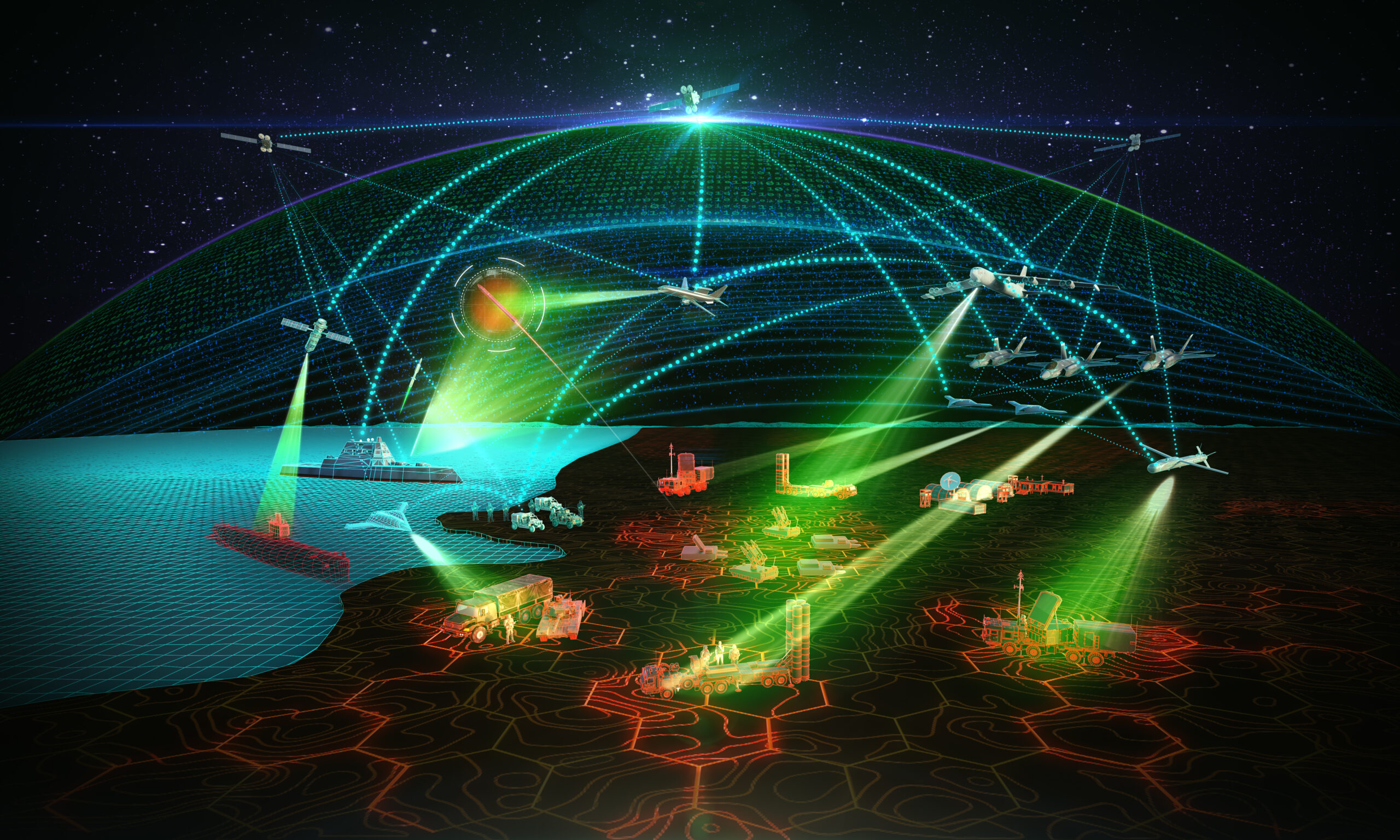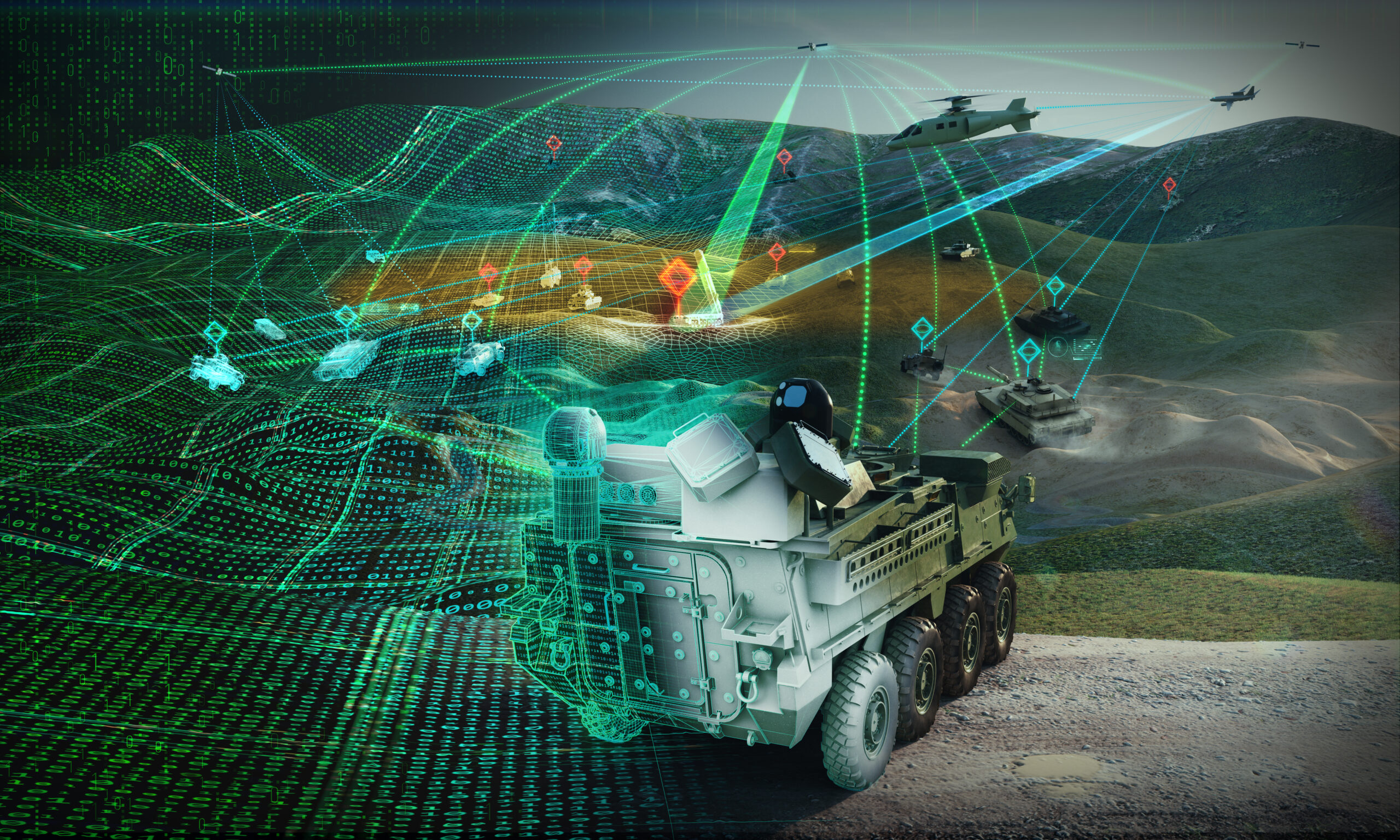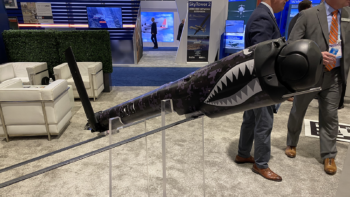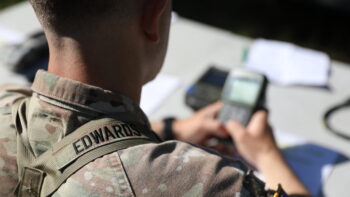Defending against peer nations and other evolving threats will depend upon the Defense Department’s ability to collect, analyze, and use data to inform decision making and create asymmetric advantages.
In this Q&A, we discuss that challenge with John Dolan, vice president of Raytheon Intelligence & Space’s U.S. Government Integrated Solutions organization. A retired Air Force lieutenant general, his last position was as the director for operations (DJ-3) for the Joint Staff. A command pilot with more than 4,000 flying hours—including more than 200 combat missions during Operations Iraqi Freedom, Enduring Freedom, and Northern Watch—he was also the commanding general of the 5th Air Force and U.S Forces Japan.
Breaking Defense: What’s Raytheon Intelligence & Space’s vision for what JADC2 should look like?

John Dolan, Vice President of Raytheon Intelligence & Space’s U.S. Government Integrated Solutions Organization.
Dolan: Our vision is the same as the U.S. Department of Defense’s vision, which is to simplify our communications and networks. Case in point, when I was flying F-16s in the Middle East in 2013 I wasn’t allowed to take off unless a militarized business jet was overhead with a variety of radio boxes in the back that would decode the different frequencies, networks, channels, and secure communications.
At the time, my F-16 only had one particular waveform and datalink. What I needed, though, was multiple wavelengths and multiple datalinks so that I could talk to other airborne assets and ground assets. I also needed Satcom so that headquarters could sign off on the air task order.
If that business jet with all its equipment wasn’t flying, then I couldn’t fly. My mission would be scrubbed. I couldn’t go to war without it. So we’re trying to fix that.
And basically the problem industry needs to help solve is to deliver the right data to the right people at the right time – and faster than ever before.
There simply will not be enough time in the modern battlespace to change the frequency or the bandwidth. Mission success will depend on near real-time access to data and we can’t risk data connectivity failures.
It’s a very simplistic way of looking at it, but it’s a wicked problem. However, I think we’re the closest we’ve ever been to actually solving this, and that’s because the threat’s driving it. There is an urgency across our aerospace and defense community to turn JADC2 into a reality. Today’s threat is at a point where if we don’t fix our networking and our ability to communicate across all domains, we’ll lose.
Industry can help by partnering with DoD and the services to develop the cutting-edge capabilities needed in this new security landscape.
Our multi-domain footprint with technologies in protected communications, cyber, advanced sensors, space, and software solutions make us uniquely qualified to contribute the foundational solutions to solve this problem.
Breaking Defense: The DoD is looking for viable systems that can be architected together to begin creating JADC2-type capabilities in the next few years. Is that what you’re doing?
Dolan: We are making DoD’s JADC2 strategy achievable by applying our advanced capabilities in AI/ML software, autonomous sensors, resilient communications, and smart effectors. Our teams are digitally engineering cost-effective battle-management solutions today for our joint force to make more informed command decisions faster and retain an advantage against peer threats.
One of our advantages at RI&S is that we operate in all domains, particularly in space where we’ve got technologies in geospace, medium earth orbit, and low earth orbit. Space is a huge priority because it’s going to be the gateway for data and information. It has always been relied upon for capabilities like positioning, navigation, and timing – think back to navigating with the stars hundreds of years ago – but now it’s going to be even more critical. So we’re taking our technologies in space and tying them into some of the technologies we have now on the ground, in the air, and at sea.
Right now we have ground stations that take information from space and feed it to our customers. A more effective approach is to take information from a satellite in a basic form and through the use of software get it back to different venues. For example, a particular sensor may be designed to do EO/IR imaging for the Air Force, and through software design you can take that same information and change it to information that the Army might need for long-range fires.
That’s a system we’re developing for the Army now, called Tactical Intelligence Targeting Node or TITAN. We believe there is an opportunity to take something like our TITAN solution and apply that to a similar baseline for the Navy and the Air Force’s mission needs. There’s also a potential cost savings because another customer has already invested in the technology and we can package it at an affordable solution set.
Breaking Defense: You’re also working with DARPA on another software-based program called DyNAMO. Tell me about that.
Dolan: DARPA’s Dynamic Network Adaptation for Mission Optimization program or DyNAMO can serve as a universal translator to share data seamlessly in hostile environments.
In my example on data connectivity in the F-16, what I was talking about was the Battlefield Airborne Communications Node or BACN. It’s a high-altitude communications gateway for voice, video, and data. BACN is one way to put a single data translator in the sky, but it takes time to receive data and then relay it to assets. It’s a stop-gap solution.
DyNAMO is a more efficient software solution that shares data in near real-time to any asset producing information on aircraft, sensors, or apps. We’ve developed and demoed DyNAMO’s interoperability across a range of radio platforms and security domains, as well as joint air and ground forces.
Software solutions like DyNAMO are fixes for communications challenges of the past. It’s a prime example of the advanced networking technologies needed to develop the foundational technologies for JADC2 to serve our forces in peer-to-peer conflicts.
Breaking Defense: Your background gives you unique insight into the Great Power competition. Describe the JADC2 mission in that scenario.
Dolan: I look at JADC2 as a tool to execute our strategy versus a mission. A JADC2 network gives us an asymmetric advantage.
The future environment will be highly contested on the fringes of visual combat and success will depend on rapid access to data.
The side that can sense, make sense the quickest, and make a decision faster than your adversary is going to have the advantage and win. That’s a strategy that has to extend from the highest level of decision makers all the way down to the tactical level to our carrier strike groups, our brigade combat teams, and our squadrons of fighters
In a peer-to-peer conflict, forces and technologies will be distributed in every domain making it a challenge to stay connected and resilient communications even more paramount. Accounting for the rapid delivery and trustworthiness of data is what’s going to enable the warfighter to exercise this JADC2 concept of operations that they’re looking to develop in the future.
And now because of the peer threat’s sophisticated capabilities and the introduction of hypersonics, that challenge just increases. The speed of new advanced technologies, again, back to hypersonics, means they have to deploy at range. That’s why JADC2 is an imperative to bring to fruition.
It all gets back to this: picture a layer, the network that we just described, that can link all that data across each contested domain. Say the SATCOM goes out in an aircraft. With JADC2, you wouldn’t even know it’s lost because it automatically switched to a different mode. Maybe it’s not until the debrief that you realize that you lost the node. With that, you can achieve the asymmetric advantage that I mentioned earlier. That’s a solution set that we’re working on getting to the joint force.






















